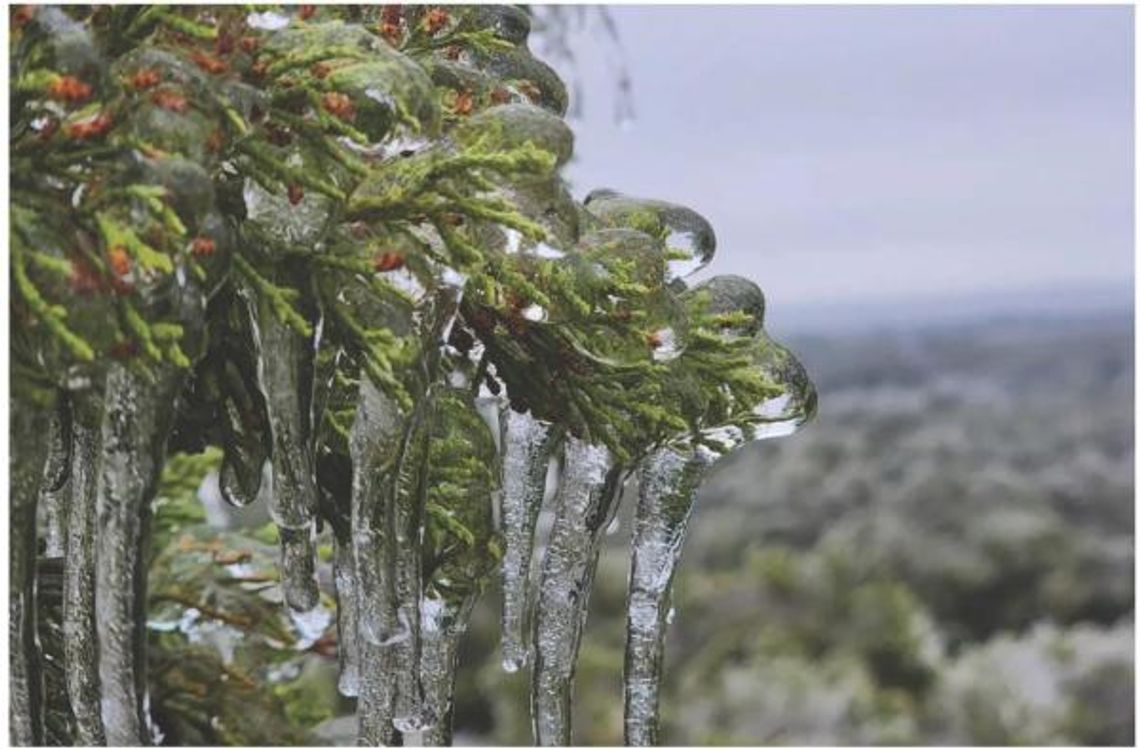Large parts of Central Texas experienced significant ice accumulation — leading to multiple governmental agencies making disaster declarations — after Winter Storm Mara blew through the Hill Country early this year.
The initial winter storm warning went into effect the morning of Monday, Jan. 30, and lasted through 6 a.m. on Thursday, Feb. 2. Temperatures dipped just below freezing throughout the three-day span with precipitation in the form of a wintry mix of snow, sleet and rain. However, it was the ice accumulation on tree branches and power lines that led to the state of disaster, as noted by Texas Governor Greg Abbott in a statement.
'The State of Texas has provided all assistance requested throughout the severe weather this week, and we continue to ensure that communities across our state have the resources and support they need to recover from the winter weather event,' the statement read.
Abbott issued a disaster declaration for Denton, Hays, Henderson, Milam, Smith, Travis and Williamson counties, all of which experienced significant initial damage. More counties were later added based on damage assessments.
Abbott said the declaration would enable the state to provide assistance to people and communities with property damage and provide additional access to local, state and federal resources. Abbott encouraged residents to report damage, with details and photos if possible, through the Individual State of Texas Assessment Tool survey, organized by the Texas Department of Emergency Management and available at damage, tdem.texas.gov. Hays County also issued a disaster declaration regarding the significant damage throughout the county, mobilizing county resources to deal with the dangerous conditions.
“Hays County Judge Ruben Becerra under the advisement of Mike Jones, Emergency Services Director, and Alex Villalobos, Chief of Staff, issued the declaration to prevent threats and maintain the health and safety of the community,” Hays County said in a statement on Friday, Feb. 3.
This declaration activated the Hays County Emergency Management Plan, which is designed to remain in effect until (in this case) winter weather conditions no longer exist, it expires after seven days or it is continued by a resolution of the Hays County Commissioners Court.
The city of Dripping Springs followed suit with its own disaster declaration, issued by Mayor Bill Foulds, Jr. on Sunday, Feb. 5.
According to a statement from the city, “The mayor and the Emergency Management Director have determined that weather-related conditions pose a significant threat of property damage and that there is an imminent threat of injury or loss of property resulting from icy weather conditions, damaged trees and landscaping, power outages, internet outages and other related infrastructure due to the recent ice storm.”
This disaster declaration was added to the agenda for the Dripping Springs City Council meeting on Tuesday, Feb. 7. At this meeting, the City Council voted to enable emergency spending by the city’s Emergency Management department up to $50,000.
After months of cleanup, President Joe Biden issued a disaster declaration in April for 13 Texas counties, freeing federal relief for areas damaged in the crippling ice storms.
Disaster relief was made available for state agencies, local governments and some nonprofits “on a cost-sharing basis” to repair and replace damaged facilities and conduct other emergency work, according to a statement from the White House on April 22.
Texas Governor Greg Abbott, who had requested a disaster declaration covering 23 counties, thanked Biden for the designation, calling it “a critical first step to helping Texans recover from this severe weather event.”
“Texas will continue to work with our federal partners to support recovery from damage that occurred as a result of this storm,” Abbott said in a statement.
Saturday’s disaster declaration included Travis County, home to the state capital, and nearby counties of Bastrop, Blanco, Burleson, Burnet, Hays, Lee, Milam and Williamson. Henderson County southeast of Dallas, Kendall County south of Fredericksburg and Leon and Robertson counties east of Waco also were included.
Money was also made available for hazard mitigation measures across Texas, the White House said, with additional disaster relief available if Texas requests help and future damage assessments find a need.
Ultimately, the storm in late January and early February left a damaging coat of ice across a broad swath of Texas, cutting power to more than 300,000 customers statewide and hitting the Central Texas region around Austin particularly hard.
.png)









